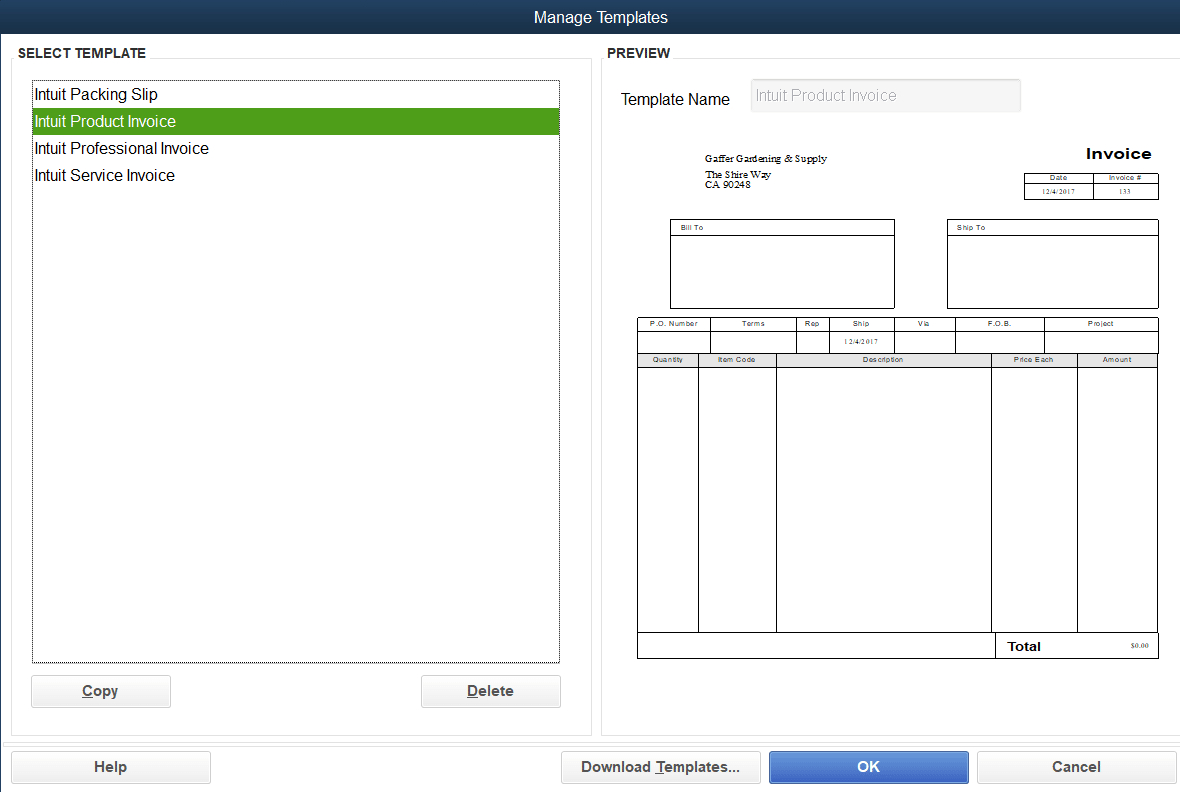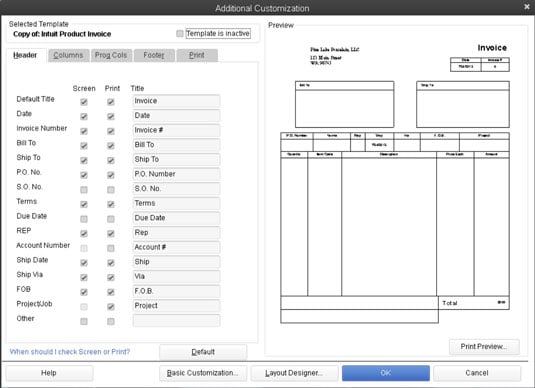

- CREATE INVOICE TEMPLATE IN QUICKBOOKS SERIAL
- CREATE INVOICE TEMPLATE IN QUICKBOOKS FULL
- CREATE INVOICE TEMPLATE IN QUICKBOOKS CODE
The number of units of an item could be specified in various units of measurement depending upon the nature of the item to be shipped.

The unit of the item deals with the item quantity, that is, the number of individual items that are being shipped. Number of Units, Unit Value, and Total Value of Each Item Thus, in this case, the country of origin is France and not Germany.įurthermore, if any work has been carried out on the items in a transaction in another country before the import of such goods, such work must change the items significantly for that country to be called the country of origin. Thus, it is the country of manufacture of imported goods and not the country from where the items are shipped.įor example, goods manufactured in France are shipped from Germany. Country or Territory of Origin of the CommodityĬountry of Origin is the country where the items in question are manufactured, produced, or grown. Therefore, providing these details helps to avoid any delays and additional charges. This is a system that is used by customs authorities across the globe to identify the product so as to determine the duties and taxes. The shipper needs to provide this information to help the customs department in the clearance of the goods. Harmonised Tariff Codes are the codes that are used to classify and define internationally traded goods. These details provided by the shipper are used by the importing country’s brokerage department to determine the import duty and the taxes on the goods that form part of the shipping transaction.
CREATE INVOICE TEMPLATE IN QUICKBOOKS SERIAL

In this section, the shipper (exporter) specifies the reason or why he is undertaking such an export. These rules specify the responsibilities of both the buyers and sellers with regard to insurance, shipment, customs clearance, documentation, and other logistical activities. Incoterms are widely used terms of sale and are a collection of eleven individual rules that are recognised internationally. These terms specify which party (seller or buyer) is responsible for paying various costs such as shipping, insurance, import tax, and duty charges. Terms of Sale, also known as Incoterms, are the billing terms specified on the commercial invoice. Much like the details mentioned above, you need to specify the contact number of both the shipper as well as the consignee on the commercial invoice. Contact Number of Both Shipper and Consignee
CREATE INVOICE TEMPLATE IN QUICKBOOKS CODE
It includes the contact name, address with postal code and country, and the tax ID of the shipper as well as the consignee.
CREATE INVOICE TEMPLATE IN QUICKBOOKS FULL
This section of the Commercial Invoice includes full details of the shipper (seller) and the consignee (buyer). The following items are examples of what needs to be included in a commercial invoice: Complete Name and Address Details of Both the Shipper and Consignee

However, there are certain requirements that a commercial invoice must include, such as specific information about the parties involved in the transaction, the goods being transported, the country of manufacture, Harmonised System Codes for the goods involved, etc. There is no standard format for a commercial invoice.


 0 kommentar(er)
0 kommentar(er)
